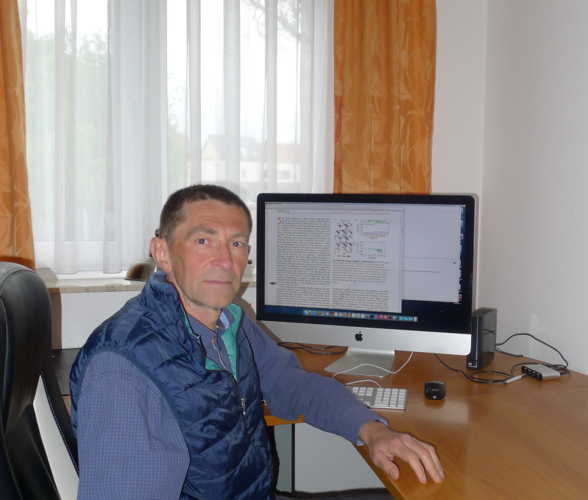What is more important when it comes to research: theory or conducting experiments? In an ideal world, both, as demonstrated by a collaboration effort between the Johannes Kepler University Linz and the Max Planck Institute in Halle. The Linz physicists succeeded in providing the theoretical explanation for surprising experimental outcomes in Germany.

The German researchers used X-ray spectroscopy to determine certain CrTe2 structures and came across skyrmions, which are tiny magnetic vortex nodes that behave like particles. As skyrmions have large spin structures, they are relatively impervious to interfering influences and are promising candidates for use as information carriers, ranging from conventional storage media to potential applications in advanced quantum computers.
Skyrmions, however, like to make themselves scarce and only a few materials have the properties to form these kinds of spin structures. CrTe2 is not one of them. Univ. Prof. Dr. Arthur Ernst (Department of Many-Particle Systems at the JKU) explained: "Skyrmions actually only form when the material is magnetic but not centrosymmetric." Centrosymmetric (also called point symmetry) is a geometric figure when it is mapped onto itself by reflection at a symmetry point. Although CrTe2 has matching magnetic properties, it is also centrosymmetric and subsequently unsuitable for skyrmions. The German researchers were therefore surprised to discover the spin structures.
A Defective System Works Better
Seeking advice, they turned to the experts in Linz, who were indeed able to solve the puzzle. The scientists in Halle used samples that contained defects, meaning they were not completely pure. Prof. Ernst remarked: "These defects broke the symmetry, allowing skyrmions to form." To be specific, this defect is an excess of 30% of Cr atoms. Prof. Ernst added: "This violates the stichometry, meaning changes the chemical composition."
His team is now developing methods and targeted approaches to induce this kind of symmetry-breaking effect. The JKU physicist stated: "The approach could be used to elicit spin structures in a wide range of magnetic materials, resulting in new approaches when it comes to information storage media. As you can see, not all defects result in failure."








